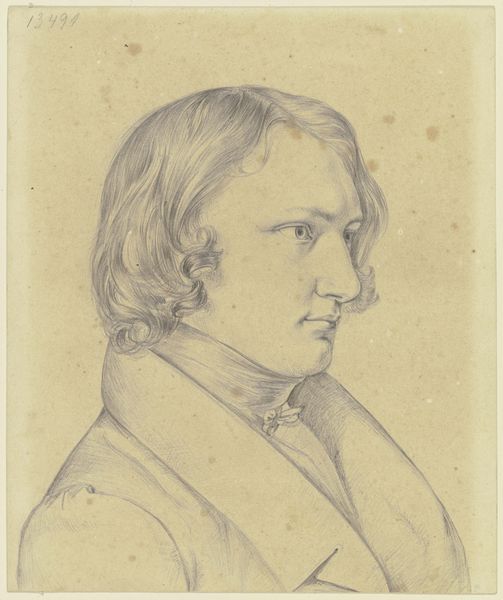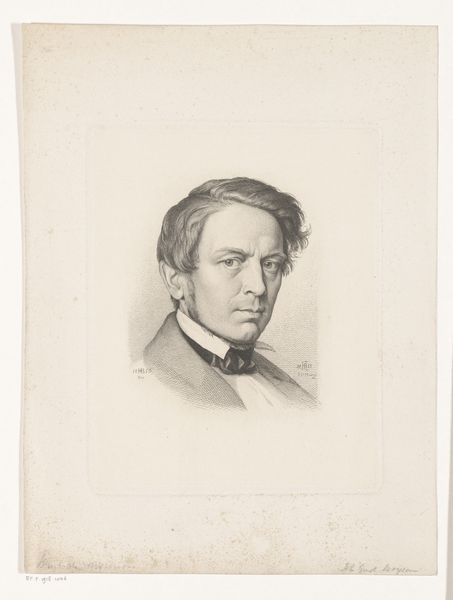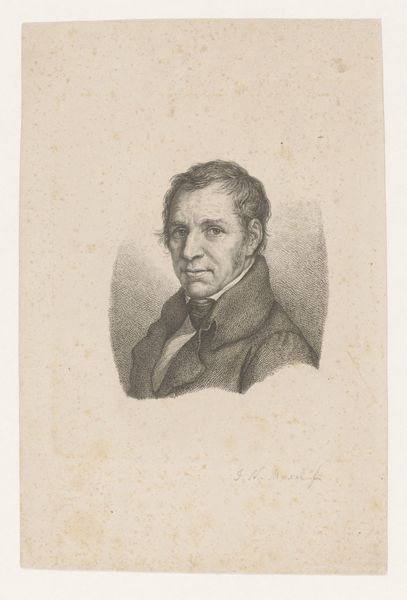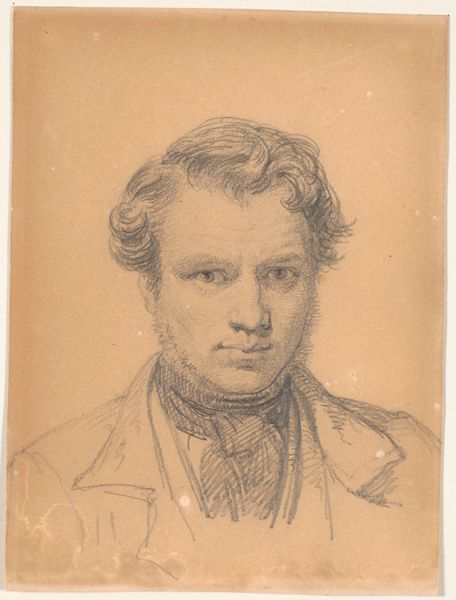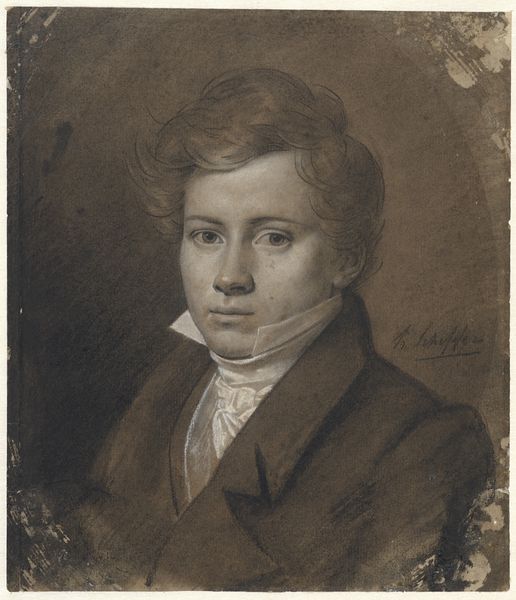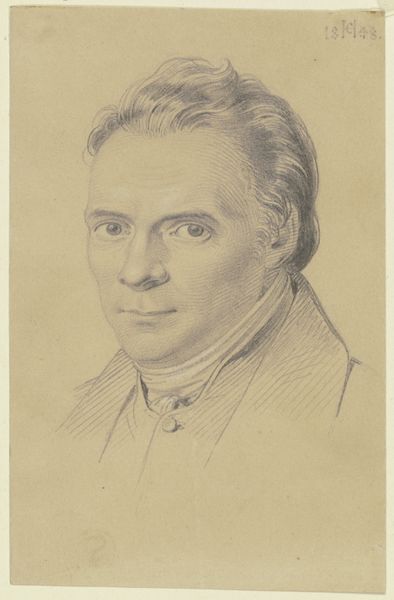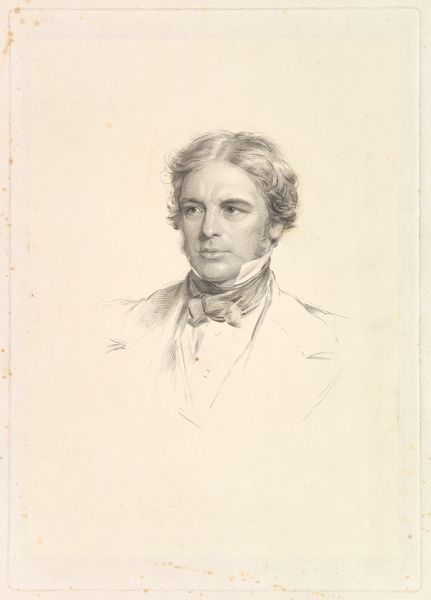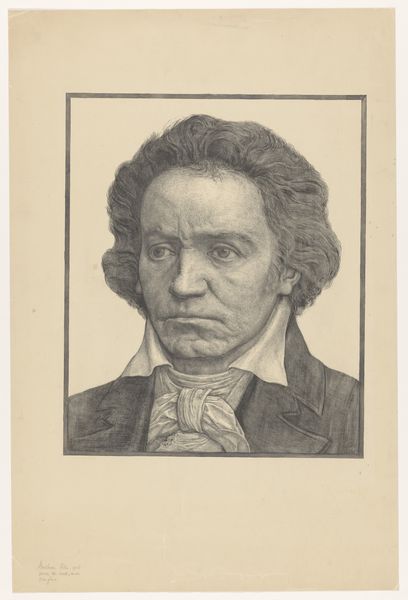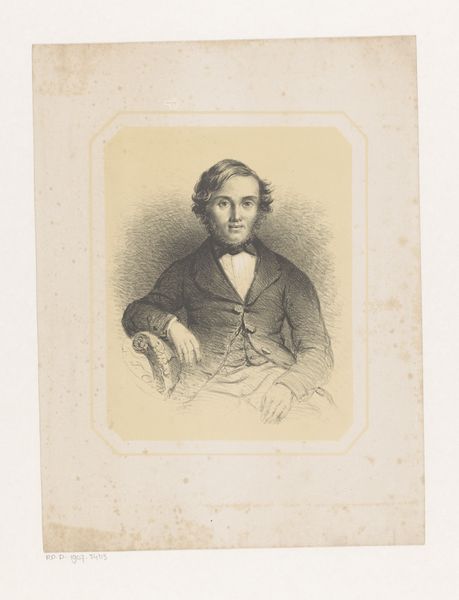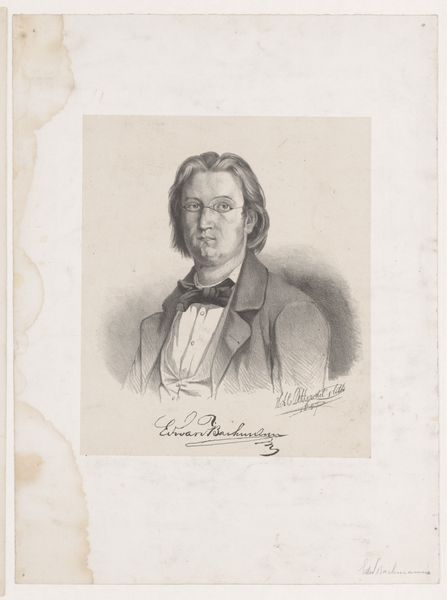
Copyright: Public Domain
Curator: I find myself drawn to the delicate rendering of Hans Thoma's "Portrait of a Son of Ludwig Thoma," created circa 1850-1860. It’s a beautifully subtle example of portraiture in Romanticism. Editor: There's an appealing immediacy in this chalk, ink, and pencil drawing on paper. It captures a moment, doesn’t it? A slightly melancholy expression, almost fragile. Curator: Precisely! Looking at it, one considers the expectations placed upon young men of that era. We should remember how deeply masculinity was coded and reinforced in the 19th Century. There's perhaps a certain burden visible in his face, amplified by the constraints of formal dress and social positioning. Editor: That very formality interests me. Notice how the materiality—the paper itself, the layering of chalk and pencil—creates a certain depth, almost as if Thoma were building a person from base materials. One wonders about the availability and sourcing of materials as well. Did the Thomases have greater access? Curator: Undoubtably, the artist's social position affected material choice. However, if we consider Ludwig Thoma's work and context, we observe how social realism and the representation of common life emerged during the late 19th Century as artistic subjects. Could this then reflect Thoma's own social awareness and class consciousness? Editor: Perhaps, but this early work—from Hans Thoma—feels less invested in social commentary than in the careful rendering of texture. The soft chalk and precise ink create a captivating visual tension. Notice the slight imprecision? It prevents it from becoming merely academic. Curator: I am intrigued. Could we consider then the power dynamics inherent within a patron/artist relationship? Who held authority over subject and meaning? What role did their individual perceptions of gender or identity fulfill when portraying particular people? Editor: Ultimately, it's the combined effort: materials chosen, techniques applied, subject represented – and viewer who then interprets that holds importance. It's about understanding the social fabric woven within and around it. Curator: Thank you for highlighting a refreshing interpretation! Seeing it through a materialist lens brings the complex interplay of creation and meaning into a new light. Editor: Indeed! Considering its materiality illuminates its meaning further, allows us to see both art, process, and individual.
Comments
No comments
Be the first to comment and join the conversation on the ultimate creative platform.
